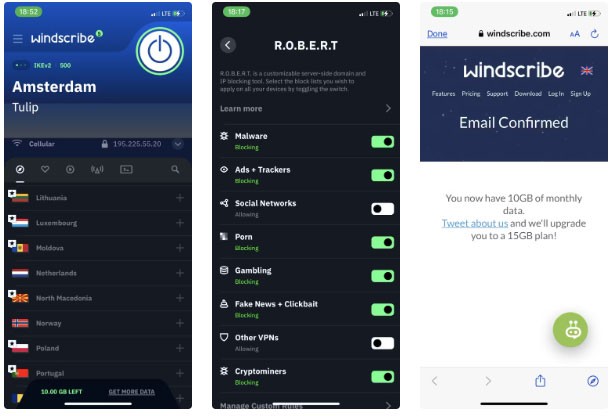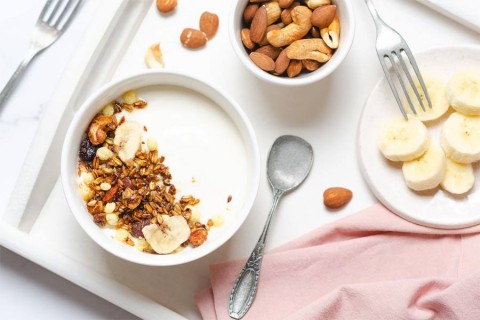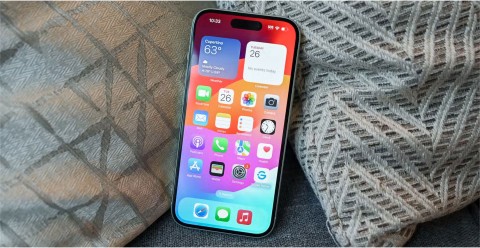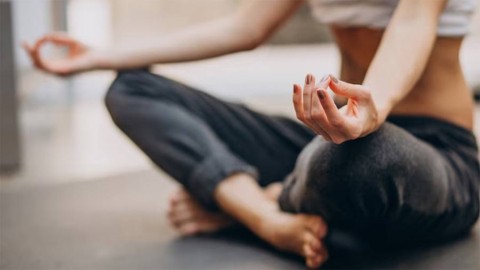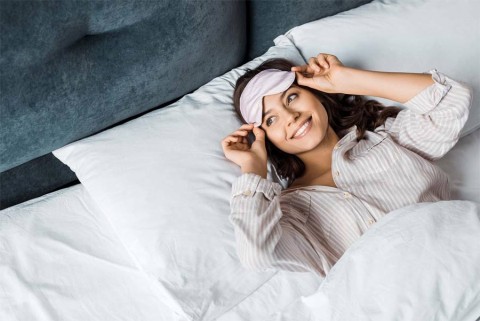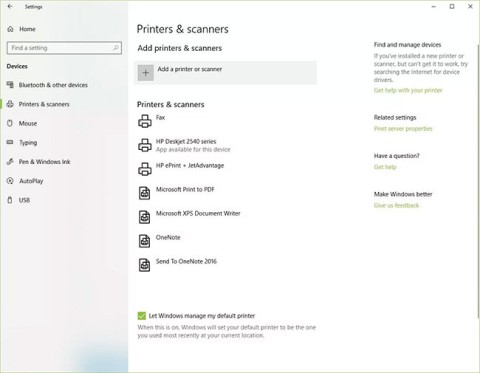The most commonly deficient nutrients in the diet

Diet is important to our health. Yet most of our meals are lacking in these six important nutrients.
Smartphones make taking photos incredibly easy, but getting the best results requires understanding some of your camera's settings. Knowing what each feature does can make the difference between a good photo and a great one. To help you get the most out of your smartphone's photography capabilities, here's a breakdown of some of your smartphone's key camera settings and features.
1. Aspect ratio
The aspect ratio determines the shape of your photos and videos. On both iPhone and Android devices, you can adjust this ratio to change how well the scene fits into your frame. Popular aspect ratio options include 4:3, 16:9, and even 1:1. 4:3 gives a traditional look and maximizes sensor usage, while 16:9 is wider and better for landscapes or social media.
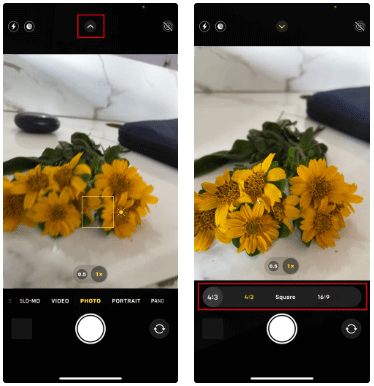
Choosing the right aspect ratio depends on what you want to do with your photo. If you want a cinematic feel, 16:9 might be a good choice. For prints or detailed photos, use 4:3 for the highest resolution. 1:1 is ideal for square photos, like those on Instagram.
2. Grid lines
Grid lines help with composition, allowing you to align your subjects using the " rule of thirds ." These lines divide the screen into nine equal sections, making it easier to balance your photo. Both iPhone and Android phones have an option to enable grid lines in the settings.
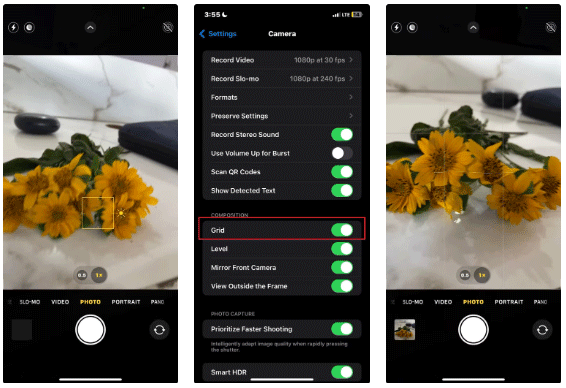
Using grid lines can make a big difference when framing your subject. Placing key elements where the lines intersect often creates more visually interesting photos. They are also useful for keeping skylines or buildings straight when shooting architecture.
3. Focus and exposure
Focus and exposure control the sharpness of the subject and the brightness of the image. Most phones let you tap the screen to focus on a specific area, and the iPhone even lets you lock focus and exposure by holding your finger on the screen. On Android, you can have similar controls by tapping to focus, with a slider to adjust the brightness.
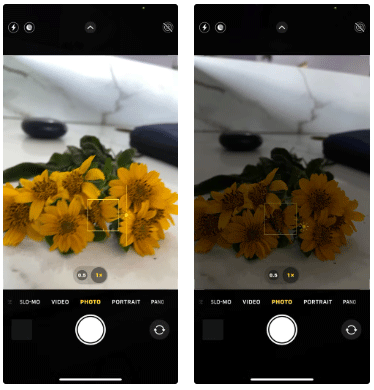
This setting is especially useful in difficult lighting conditions. By manually adjusting focus and exposure, you can ensure your subject is sharp, even when the lighting is less than ideal.
4. HDR (High Dynamic Range)
HDR, or High Dynamic Range, is designed to capture better detail in both the bright and dark areas of a photo. When enabled, your phone takes multiple photos at different exposures and combines them to create a well-balanced image. On iPhone, you can turn HDR on or off in the camera settings, while on Android, it's usually in the same menu or as a quick toggle in the camera app.
HDR is most useful in scenes with strong contrast, like landscapes with bright skies and dark foregrounds. When enabled, it helps ensure that no part of the image is too light or too dark, giving you a more detailed and vibrant photo.
5. Night mode
Night Mode is a lifesaver for low-light photography. Both iPhones and Android phones have this feature, which automatically detects low-light conditions and adjusts settings to capture more detail in the dark. On iPhones, Night Mode kicks in automatically when lighting conditions are dark enough, while many Android phones offer it as an optional mode in the camera app.

Night mode is especially useful for taking well-lit photos without using a flash. It extends the exposure time, so you may need to hold your phone steady or use a tripod to avoid blur.
6. Portrait mode
Portrait mode is designed to take photos with a sharp subject and a blurred background, simulating the effect of a DSLR camera. On iPhones, you'll find this mode in the main camera interface, while Android phones often label it similarly.
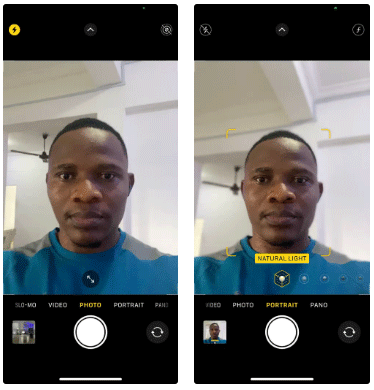
This mode is perfect for taking photos of people, pets, or objects where you want to isolate the subject and create a beautiful blurred background effect.
7. Continuous shooting mode
Burst mode lets you take a series of photos in quick succession, which is great for capturing action or unexpected moments. On an iPhone, simply hold down the shutter button to enable Burst mode, while many Android phones offer a similar feature, although some may require you to enable it in the settings.
Burst mode is especially useful for sports or fast-moving subjects. It takes multiple frames so you can choose the best shot later without worrying about missing the perfect moment.
8. Timer
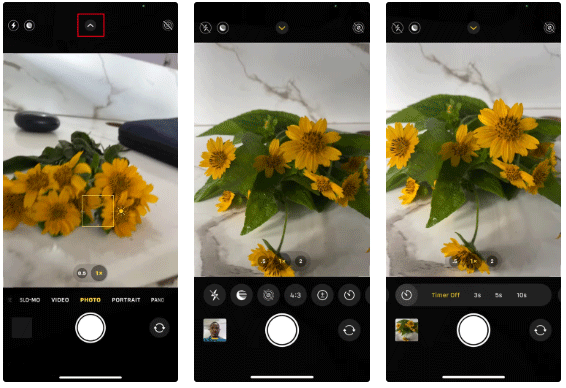
The Self-Timer feature is a handy tool for taking selfies or group photos without someone pressing the shutter button. Both iPhones and Android phones typically offer a 3-second or 10-second timer option in the camera app settings.
Using a timer can help you frame the perfect shot, especially for group photos you want to include. It allows you to set the composition within the frame.
9. Panorama mode
Panorama mode lets you capture landscapes or wide-angle scenes by taking a series of photos and stitching them together. On an iPhone, you can easily switch to Panorama mode by swiping on the camera mode options. Most Android devices have this feature too, usually located in the mode settings of the camera app.
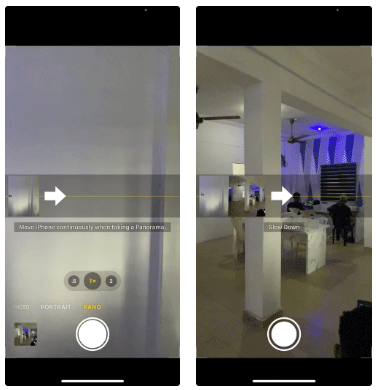
This mode is great for capturing panoramas or large gatherings. To use Panorama effectively, move your phone slowly and steadily across the panorama, making sure you don't stray too far from the on-screen guidelines.
10. Flash settings
The flash can be a useful tool, but it should be used with care. Most phones have three flash options: Auto, On, and Off. Both iPhones and Android phones default to Auto, which only turns on the flash when the camera detects low light. You can turn it on manually if you need more brightness, or turn it off if you prefer natural light.
Flash is best used in low-light situations when there are no other lighting options. However, in many cases flash can create harsh lighting, so it's best to use alternative light sources or adjust your exposure settings for a softer effect.
11. Animation
Live Photos captures a few seconds of video along with a still photo, adding a dynamic element to your photos. On iPhones, this feature is enabled by default and can be identified by a circular icon in the camera app. Many Android devices offer a similar feature, sometimes labeled as Motion Photos or Action Photos.
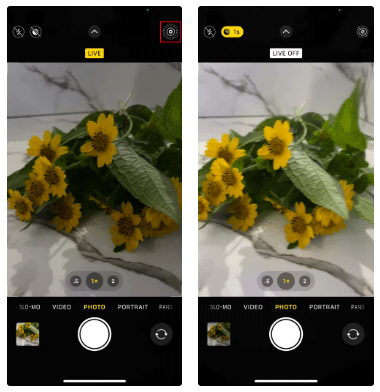
12. Video settings
Both iPhone and Samsung Galaxy devices come with impressive video settings that make it easy to create high-quality footage. You can adjust a variety of options to tailor your recordings for different situations, ensuring your videos look as great as your photos.
On iPhone, you can access video settings directly in the Camera settings. Here, you can choose from different resolutions and frame rates. For example, if you want stunning clarity, choose 4K at 60fps. If you prefer a more standard option, 1080p at 30fps works just as well.
Newer iPhone models offer Cinema Mode, which gives your videos a shallow depth of field, adding a professional touch that makes your footage stand out.
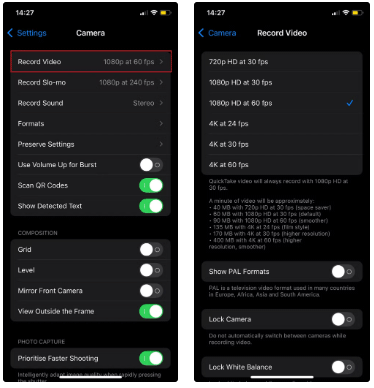
Samsung Galaxy users will find similar options in their camera app. You can choose video resolutions like 8K or 4K, depending on your model. Galaxy phones also have slow-motion and super-speed video recording options, giving you even more creative flexibility.
Understanding the different camera settings on your smartphone can enhance your photography skills and help you capture moments with precision and creativity. Whether you're an iPhone or Android user, familiarizing yourself with these options will help you make informed choices about how you take photos and videos.
Diet is important to our health. Yet most of our meals are lacking in these six important nutrients.
At first glance, AirPods look just like any other true wireless earbuds. But that all changed when a few little-known features were discovered.
In this article, we will guide you how to regain access to your hard drive when it fails. Let's follow along!
Dental floss is a common tool for cleaning teeth, however, not everyone knows how to use it properly. Below are instructions on how to use dental floss to clean teeth effectively.
Building muscle takes time and the right training, but its something anyone can do. Heres how to build muscle, according to experts.
In addition to regular exercise and not smoking, diet is one of the best ways to protect your heart. Here are the best diets for heart health.
The third trimester is often the most difficult time to sleep during pregnancy. Here are some ways to treat insomnia in the third trimester.
There are many ways to lose weight without changing anything in your diet. Here are some scientifically proven automatic weight loss or calorie-burning methods that anyone can use.
Apple has introduced iOS 26 – a major update with a brand new frosted glass design, smarter experiences, and improvements to familiar apps.
Yoga can provide many health benefits, including better sleep. Because yoga can be relaxing and restorative, its a great way to beat insomnia after a busy day.
The flower of the other shore is a unique flower, carrying many unique meanings. So what is the flower of the other shore, is the flower of the other shore real, what is the meaning and legend of the flower of the other shore?
Craving for snacks but afraid of gaining weight? Dont worry, lets explore together many types of weight loss snacks that are high in fiber, low in calories without making you try to starve yourself.
Prioritizing a consistent sleep schedule and evening routine can help improve the quality of your sleep. Heres what you need to know to stop tossing and turning at night.
Adding a printer to Windows 10 is simple, although the process for wired devices will be different than for wireless devices.
You want to have a beautiful, shiny, healthy nail quickly. The simple tips for beautiful nails below will be useful for you.
